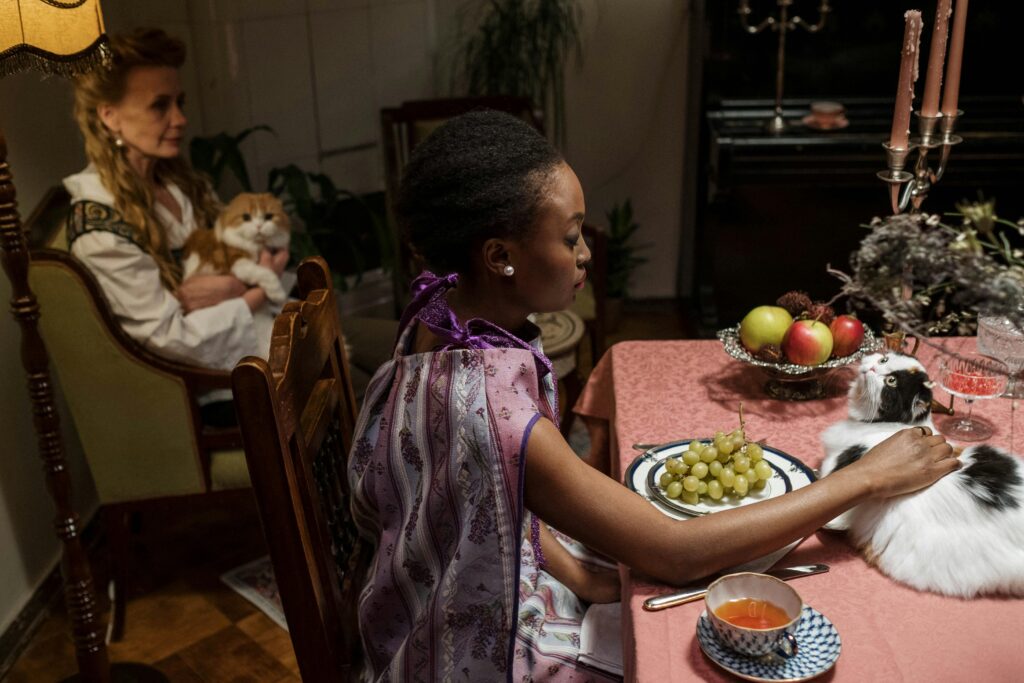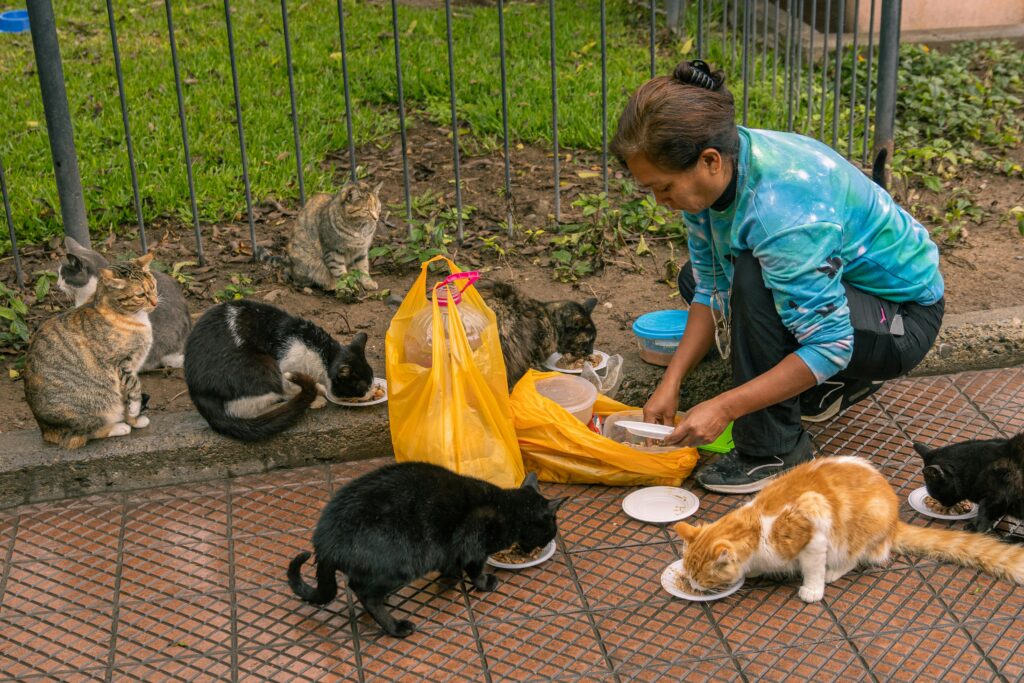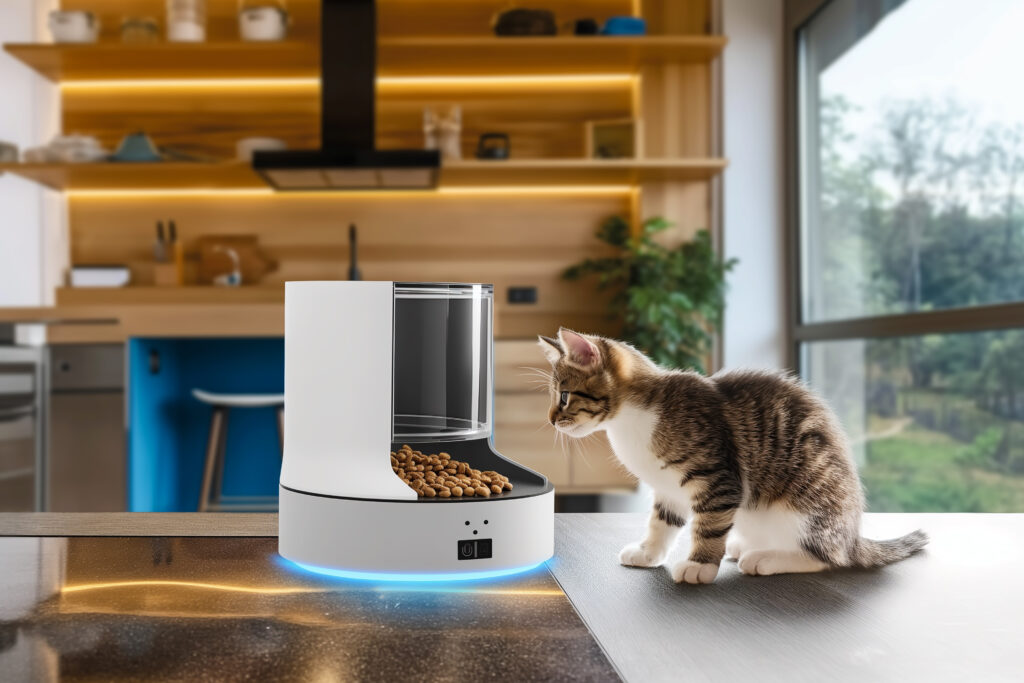
Meta Description:
Safely change your cat’s food without upsetting it. Learn step-by-step to transition Cat to new food with tips, charts, and expert guidance.
Introduction
Okay, let’s be honest for a second — switching your cat’s food sounds simple, but it’s really not. I learned that the hard way when I tried changing my cat Coco’s food. You should’ve seen the look she gave me — like I’d committed the ultimate betrayal.
Cats aren’t fans of surprises, especially not in their food bowls. And their little tummies? Super sensitive. So if you’re thinking about changing up your cat’s food, I totally get where you’re coming from — and I’ve got your back. In this guide, I’ll walk you through the dos and don’ts, how to make the switch stress-free, and how to avoid the drama I went through. Ready? Let’s do this. Why Gradual Cat Foaming Is Important
Here’s the thing — your cat’s tummy isn’t built for sudden changes. Switch their food too fast, and you might end up dealing with vomiting, loose poop, or worse — total food refusal.
By easing into it gradually, you’re giving their digestive system time to adjust to the new ingredients. Plus, it lets you keep an eye out for any weird reactions, like itching, gas, or a sudden drop in energy.
Bottom line? A slow transition = a happier, healthier kitty (and a lot less stress for you).
Disclosure: This post contains affiliate links. As an Amazon Associate, I earn from qualifying purchases.
Cat Food Transition Chart

Suddenly changing your cat’s food can upset her stomach. The best way to avoid digestive issues is by following a slow transition plan.
Here’s a basic 7-day transition chart:
| Day | Old Food (%) | New Food (%) |
|---|---|---|
| Day 1–2 | 75% | 25% |
| Day 3–4 | 50% | 50% |
| Day 5–6 | 25% | 75% |
| Day 7+ | 0% | 100% |
✅ Mix new food with the old gradually
✅ Monitor your cat’s stool and appetite
✅ If problems appear, slow down the process
This method gives your cat’s digestive system time to adapt comfortably.
When’s the Best Time to Feed Cats?
Fun fact: cats are what you call crepuscular, which basically means they’re most active at dawn and dusk. So, naturally, those are the best times to feed them.
Keeping mealtimes consistent helps your cat feel safe and balanced. Plus, it’s easier to spot if something’s off, like if they skip a meal or seem super tired. I feed Coco every morning around 7 and again at 6 in the evening, and she practically sets her own alarm clock for it now.
3. “Switching Cat Food Too Quickly? Here’s What to Do

Changing your cat’s food too fast? Yeah, that can backfire—big time. Think tummy troubles, vomiting, or even diarrhea. Cats have delicate bellies, so a sudden switch can really upset them. The trick? Go slow. Start by mixing a tiny bit of the new food with their usual stuff. Gradually increase the new while reducing the old over 7–10 days.
Keep an eye on how they’re eating, pooping, and acting. If they stop eating or seem off, hit pause and maybe call the vet. A smooth, patient transition keeps your furry friend happy—and your floors clean!
❓ Common Questions Cat Parents Ask (Because You’re Not Alone)
- How do I know if my new cat is hungry?
- You’ll know. Trust me. If they’re pacing near the bowl, meowing like it’s the end of the world, or giving you the “feed me now” stare — yep, that’s hunger. Just remember, sometimes they just want attention (sneaky, right?).
- How long will a cat refuse to eat new food?
- Usually not more than 24–48 hours. Any longer than that? Give your vet a call. Cats skipping meals for too long can become a serious issue. Taste Tests & Wet Food Tricks
Some cats are just… picky. No shame in that. If your cat sniffs the new food like it’s garbage, try a tiny taste test first — just a spoonful. If they seem curious or even nibble a bit, that’s a good sign.
Also, wet food can be a game-changer. The smell is stronger, and most cats find it way more appetizing. Try mixing a bit of wet food with the new kibble. It helped Coco a lot. Think of it like seasoning for her food—it makes all the difference. What to Watch For While Transitioning
Keep an eye out for these signs during the switch:
- Runny stool (not cute, but important to check)
- Throwing up after meals
- Total refusal to eat
- Itchy skin or over-grooming (could be allergies)
- Gassy tummy or bloating
If any of these last more than two days or get worse, reach out to your vet. Every cat is different, so tuning into their mood, appetite, and energy is key.
5. Understanding Your Cat’s Age and the Right Food
Changing your cat’s food isn’t just about picking a new flavor — it’s about understanding her age, health, and how her body reacts to change. Each stage of a cat’s life requires different nutrition, so switching foods at the right time is key to keeping her healthy and happy.
Cat’s Age and the Right Food
- Kittens (2 months to 1 year)
- Kittens need kitten food packed with protein, calcium, and energy to support healthy growth and development.
- Adult Cats (1 to 7 years)
- At this stage, your cat needs adult cat food, which is balanced to maintain energy and overall wellness.
- Senior Cats (7+ years)
- Older cats require senior cat food with fewer calories and added nutrients to support joint health and digestion.
Signs of a Bad Reaction
- Vomiting or diarrhea
- Refusal to eat
- Excessive scratching or grooming
- Lethargy or weakness
If these symptoms last more than 1–2 days, it’s time to visit the vet.
✅ Vet Advice
Always choose food based on your cat’s age, weight, and health condition. Before making a full switch, try a taste test with a small portion. If your cat is ill or shows a negative reaction, don’t experiment — consult a veterinary professional for the safest course.
Personal Experience:
So Coco had been happily munching on the same kitten food since she was tiny. One day, I thought, “She’s a big girl now — time for adult food!” And what did I do? I swapped her food overnight. Just like that.
Big mistake.
Cue the diarrhea, stink-eye, and her straight-up refusing to eat anything. I felt horrible. She was upset, and I was panicking.
After some frantic Googling and a quick call to the vet, I realized I should’ve taken it slow. I started mixing a little bit of the new food with her usual stuff using a food transition chart I found online.
And you know what? Slowly but surely, she started warming up to it. Fast-forward a few weeks — she’s eating better than ever and has way more energy. Lesson learned: cats need time, patience, and a little strategy when it comes to change.
Conclusion
✅ Take at least 7 days for the transition
Take at least 7 days for the transition
✅ Do a mini taste test first
✅ Feed at the same times every day (routine is everything)
✅ Keep an eye on stool, behavior, and energy
✅ Slow down if your cat refuses or gets sick
✅ Probiotics can help sensitive tummies
✅ Call the vet if your cat fasts for over 24 hours
FAQ
Google Ranking Summary:
Switching your cat’s food too quickly can cause digestive problems and food refusal. For a healthy transition, gradually mix the new food with the current one over 7–10 days. Monitor your cat’s appetite and behavior. A slow change leads to better digestion, more energy, and a happier, healthier cat.
.
About the Author
Rehana Munir is a passionate cat nutrition blogger who has been writing articles on cat health and nutrition for the past year. Her mission is to provide cat lovers with trusted, natural, and easy solutions. Rehana has created the website “Cat Food Mate,” which is becoming well-known for its focus on cat food and nutrition. Her work is based on research and scientific sources to ensure readers get the best information.
Reviewed and Verified
This article is carefully researched and prepared, including only authentic and reliable information. We strive to ensure every article is based on the latest scientific data and expert recommendations. If you have any questions or feedback, feel free to contact us through If you have any questions or feedback, feel free to contact us through the website.
